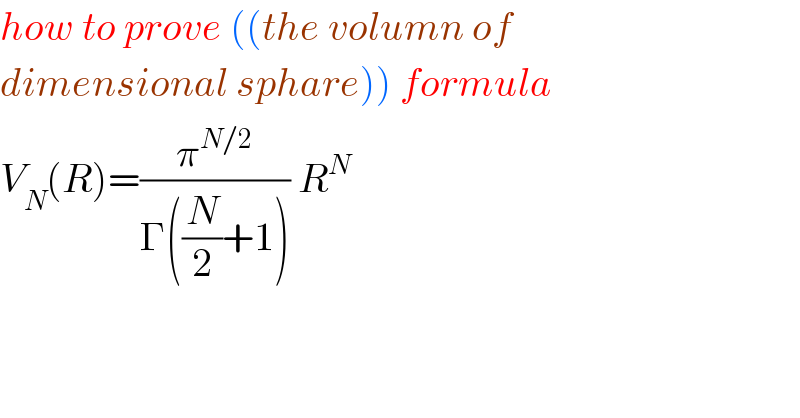
Question and Answers Forum
Question Number 97888 by M±th+et+s last updated on 10/Jun/20

Commented by EmericGent last updated on 10/Jun/20
I think you can integrate N times, I'm sorry, I can't try it now
Commented by M±th+et+s last updated on 10/Jun/20

Answered by smridha last updated on 10/Jun/20
![at first calculate v_N (1)[volume of unit circle in N dim] then multipy by R^N . you can use multidimentional calculus and constracted Jacobian for N dimention. you can see this... volume of sphere in 3D is (4/3)𝛑R^3 in 2D it became 𝛑R^2 just the area of circle in 1D it became 2R...... it′s very lengthy proof... I can solve this....thank you...](Q97899.png)
Commented by M±th+et+s last updated on 10/Jun/20

